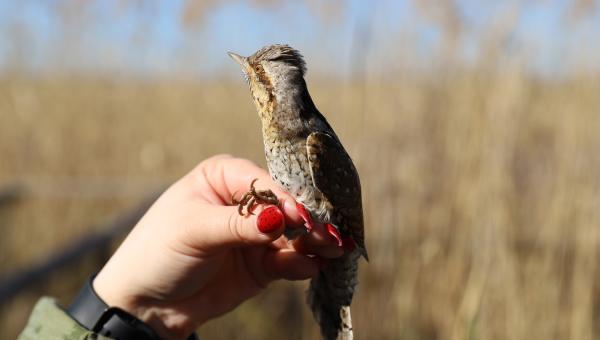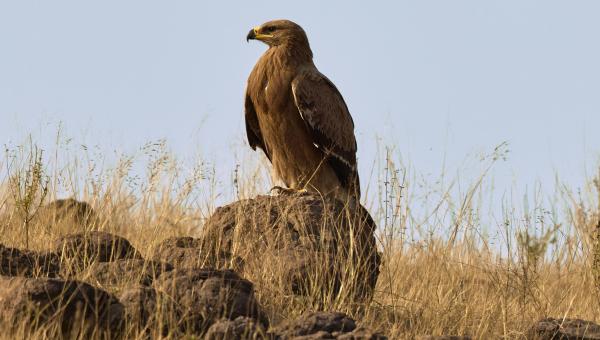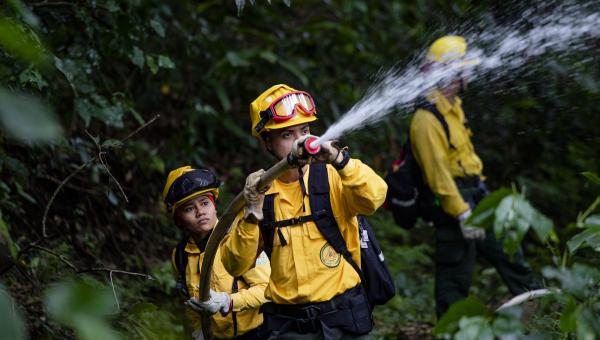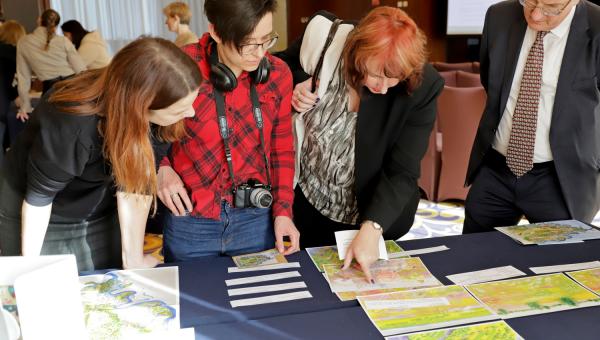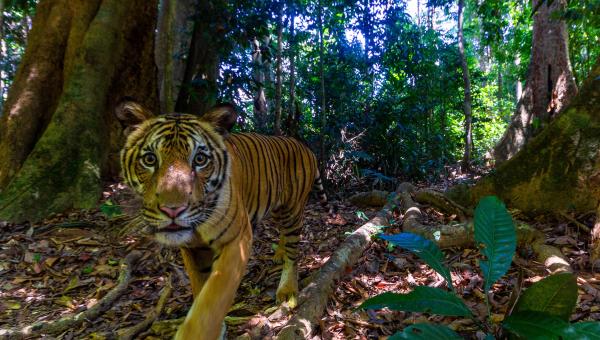Nature
Biodiversity conservation
Promoting a world where nature is protected and restored as a planetary safety net for humanity
Increasing ambition and action
To halt biodiversity loss and put nature on a path to recovery, we're increasing ambition and action. We’re working to secure a world where nature has moved to the heart of the global understanding of sustainable development.
We’re safeguarding our food, our water, our livelihoods and jobs, our climate, our health, and our security. By doing this we’re enabling people to rise out of poverty and inequality to live more just and sustainable futures.
We’re promoting nature-based solutions.
These solutions will use natural systems and processes to restore ecosystems, conserve biodiversity, and enable sustainable livelihoods. Like green roofs and urban parks and gardens, restoring wetlands, conserving mangrove forests, or switching to regenerative farming, nature-based solutions support climate change adaptation and mitigation. They are a win-win for people and nature. They can create jobs, provide new and more resilient livelihood opportunities, and increase income while also protecting the planet.
We’re unlocking nature's potential to promote an inclusive blue and green economy transformation. A blue and green economy, that understands the true value of nature, means more intact ecosystems, and more sustainable resource management.
We’re helping to improves policies – making sure that nature and tackling biodiversity loss are central. Nature-positive policies and practices are often eclipsed by nature-negative approaches and incentives. Bold shifts in policy and practice are needed to tackle direct drivers of biodiversity loss and ecosystem degradation.
UNDP is supporting biodiversity conservation
Protected Areas (PAs) are crucial for global biodiversity conservation, and the Global Biodiversity Framework calls for their expansion and effective management, improving connectivity and ecological corridors, including calling for conserving thirty per cent of Earth’s lands and waters by the year 2030. UNDP supports this goal by collaborating with a range of partners, including the Global Environment Facility (GEF), to remove barriers to PA expansion and enhance financial sustainability.
Access and Benefit Sharing (ABS): UNDP provides expert policy and technical support for access to genetic resources and fair and equitable sharing of benefits per the Nagoya Protocol of the CBD. Since 2012, UNDP has contributed to the implementation of the Nagoya Protocol through multiple GEF-funded projects implemented in over 50 countries. These projects have facilitated the design of national ABS legal and policy frameworks, increased the awareness and capacities of indigenous peoples and local communities on ABS issues, and built trust between users and providers of genetic resources for the development of products that contribute to sustainable development.
Agrobiodiversity is a vital subset of biodiversity, which is developed and actively managed by farmers, herders and fishers. Locally varied food production systems are under threat, including local knowledge and the culture and skills of women and men farmers. With this decline, agrobiodiversity is disappearing; the scale of the loss is extensive. Locally diverse food production systems are under threat and, with them, the accompanying local knowledge, culture and skills of the food producers. The loss of forest cover, coastal wetlands, ‘wild’ uncultivated areas and the destruction of the aquatic environment exacerbate the genetic erosion of agrobiodiversity. With the disappearance of harvested species, varieties and breeds, a wide range of unharvested species also disappear. Farmers and farming communities have a significant role to play in the preservation and conservation of these resources and ecosystems.
Mainstreaming Biodiversity: UNDP works to integrate biodiversity considerations into various sectors, promoting sustainable practices and reducing negative impacts on biodiversity. Our efforts focus on three key areas: 1) Strengthening Governance Frameworks at the landscape level, 2) Supporting Market Transformations, and 3) Fast-tracking National Biodiversity Strategy-Setting and Implementation (see more on our National Biodiversity Strategies and Action Plans (NBSAPs) support here).
Wildlife and Conservation Area Management: UNDP holds years of experience and technical expertise in wildlife and protected area management. It convenes partners for promoting transboundary wildlife conservation, provides policy and capacity development support for combatting the illegal wildlife trade, terrestrial and marine protected area system strengthening, indigenous and community managed conservation area strengthening, protected area landscape management, human wildlife conflict management, and development of wildlife economies.
Invasive alien species (IAS) are among the top five drivers of biodiversity loss, and their impact doesn't stop there. They are intricately linked to other global challenges, including climate change, food and water security, and human health. Addressing the issue of IAS isn't just about preserving our natural heritage – it's also about contributing to wider biodiversity conservation, such as the Global Biodiversity Framework and particularly Target 6, and achieving the Sustainable Development Goals. The recent IAS assessment released by the Intergovernmental Science-Policy Platform on Biodiversity and Ecosystem Services (IPBES) sheds light on this pressing global issue. As UNDP Administrator Achim Steiner aptly puts it, “Invasive alien species are one of the most striking symptoms of the adverse effect of human activities on our natural world.” Recognizing the profound implications of IAS, UNDP has been at the forefront of addressing this challenge through several initiatives in various countries. The fight against IAS is not just the responsibility of governments or organizations. It starts in our backyards. Every plant we grow, every pet we keep, and every product we buy can have implications for our local ecosystems. As we stand at a crossroads of ecological challenges, let's remember that only by taking collective action can we weave a future where the tapestry of Earth's biodiversity remains vibrant and intact.

 Locations
Locations



